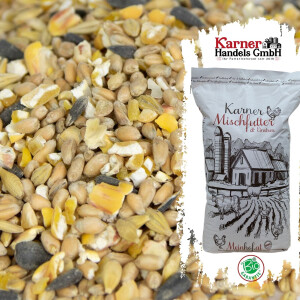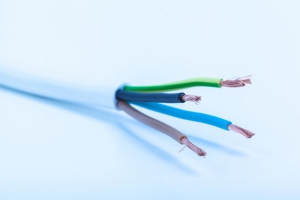For many poultry keepers, standing in the feed store presents a modern-day dilemma: the choice between organic and conventional commercial feed. This decision is more complex than simply picking a bag; it involves considering your farming philosophy, budget, and goals for your flock. Both options will keep your birds fed, but they travel very different paths to get to your feeder. Understanding the core distinctions can help you determine which approach aligns best with your vision for a healthy and sustainable flock.
The Foundation of Organic Certification
Organic Hühnerfutter is defined by a strict set of agricultural practices verified by a third-party certifier, most commonly under the USDA National Organic Program. This means the grains and other ingredients are grown without the use of synthetic pesticides, herbicides, or genetically modified organisms (GMOs). Furthermore, the land on which these crops are cultivated must be free of prohibited substances for a number of years prior to harvest. This rigorous process ensures the feed meets a federally regulated standard, offering transparency for consumers who prioritize knowing exactly how their animals' food was produced.

The Composition of Conventional Feeds
Commercial, or conventional, feed is the widely available standard found in most farm supply stores. Its primary goal is to deliver complete, balanced nutrition in a cost-effective and consistent manner. These feeds may utilize grains from conventional farms that can employ synthetic fertilizers and GMO seeds to maximize yield and control costs. They are also more likely to include synthetic versions of key amino acids, like methionine, to ensure the feed meets the bird's nutritional requirements for growth and egg production, a point that can be a challenge for some organic formulations.
Comparing Nutritional Content and Bird Health
A common question is whether one feed is more nutritious than the other. From a fundamental macronutrient perspective—protein, fat, and carbohydrates—they can be formulated to be identical. The primary nutritional difference lies not in the baseline levels but in the sources of those nutrients and the potential for residual chemicals. Some proponents of organic feed believe that reducing the bird's exposure to pesticide residues contributes to long-term vitality. However, a bird on a high-quality conventional feed will also be healthy and productive, as both types are designed to meet all known nutritional requirements.
Evaluating the Impact on Your Wallet
There is no getting around the significant price difference between these two options. Organic feed typically costs substantially more, sometimes 50% to 100% above the price of a conventional bag. This premium reflects the more labor-intensive and lower-yield farming practices required for organic certification, along with the costs of the certification process itself. For a small backyard flock, this may be an acceptable expense. For a larger operation, the financial burden can be prohibitive, making conventional feed the only practical choice for maintaining profitability.

Considering Animal Welfare and Flock Management
The choice of feed often intertwines with broader animal welfare goals. Many farmers who choose organic feed are also managing their flocks under organic or pasture-based systems, which require access to the outdoors and prohibit the use of antibiotics. In this context, using organic feed is a necessary component of a holistic management plan. It's important to note, however, that simply feeding organic feed does not, on its own, constitute an "organic" or more humane system; the living conditions and overall healthcare practices are equally, if not more, important.
Making the Right Choice for Your Flock
So, which is truly better? The answer is deeply personal and depends on your individual priorities. If your primary concerns are minimizing synthetic chemical exposure, supporting specific agricultural systems, and you have the budget to support it, then organic feed is an excellent choice. If your focus is on reliable nutrition, cost-effectiveness, and maximizing production for a larger flock, then a high-quality conventional feed is a proven and dependable option. Both can be part of a responsible farming practice. The "better" feed is ultimately the one that sustains a healthy flock while aligning with your resources and values.





